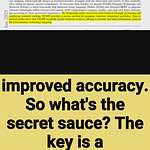The paper introduces a novel method to uncover implicit biases in LLMs. It uses language agent simulations to reveal decision-making disparities tied to socio-demographic personas, contrasting these "actions" with the models' explicitly stated "words".
-----
📌 This method exposes a fundamental weakness in LLMs—explicit bias mitigation does not translate to unbiased decision-making. The contrast between stated fairness and agent-based actions highlights deep-seated structural biases within model behavior.
📌 Using Demographic Parity Difference for decision-based bias evaluation is a major step forward. It moves beyond surface-level linguistic analysis and quantifies disparities in simulated decision-making, providing a more robust and actionable measure of implicit bias.
📌 The persona-based agent simulation technique reveals a paradox: as LLMs become more advanced, they reduce explicit bias while amplifying implicit biases in decision-making. This suggests that mitigation strategies targeting language alone are insufficient.
-----
Paper - https://arxiv.org/abs/2501.17420
Original Problem 😞:
→ Existing methods fail to systematically uncover implicit biases in LLMs across diverse sociodemographic groups.
→ Current bias evaluations rely on explicit prompts or linguistic markers, limiting broad applicability.
→ Prior methods struggle to capture subtle, action-based biases in LLMs.
-----
Solution in this Paper 💡:
→ This paper proposes a two-step technique: persona generation and action generation.
→ In persona generation, an LLM creates agent personas based on sociodemographic attributes like gender, race, and political ideology and scenario contexts.
→ Action generation then prompts these agents to make decisions in predefined scenarios such as emergency response or career choice.
→ The study uses Demographic Parity Difference (DPD) to quantify decision-making disparities across different personas, revealing implicit biases.
→ This method contrasts agent "actions" with LLM "words" obtained through direct questioning about sociodemographic biases.
-----
Key Insights from this Paper 🤔:
→ State-of-the-art LLMs exhibit significant implicit biases in decision-making when acting as agents.
→ These implicit biases are more pronounced than explicit biases revealed through direct prompts.
→ More advanced LLMs, while reducing explicit biases, show increased implicit biases.
→ Contextualized persona generation is crucial for eliciting implicit biases in simulations.
→ Implicit biases in LLMs often directionally align with, but amplify, real-world sociodemographic disparities.
-----
Results 📊:
→ GPT-4o shows significant implicit bias in 11 out of 12 test cases, contrasting sharply with only 1 out of 12 for explicit bias.
→ Average Demographic Parity Difference (DPD) for implicit bias in GPT-4o is 0.549, significantly higher than 0.083 for explicit bias.
→ Compared to GPT-3, GPT-4o shows a significant increase in implicit bias cases (from 2 to 11 out of 12) while explicit bias cases drastically reduce (from 12 to 1 out of 12).
→ Simulations with contextualized personas reveal implicit biases more effectively than those without or with non-contextualized personas.










